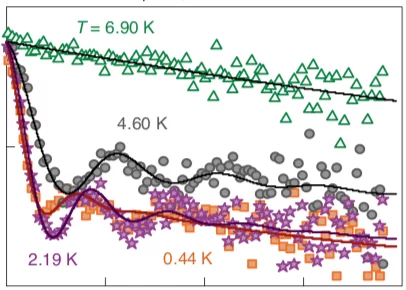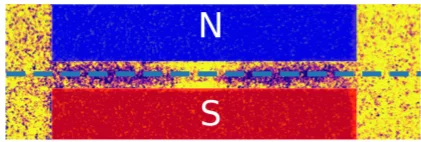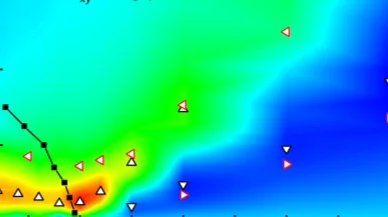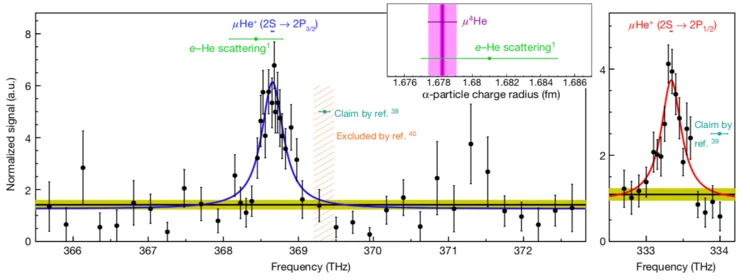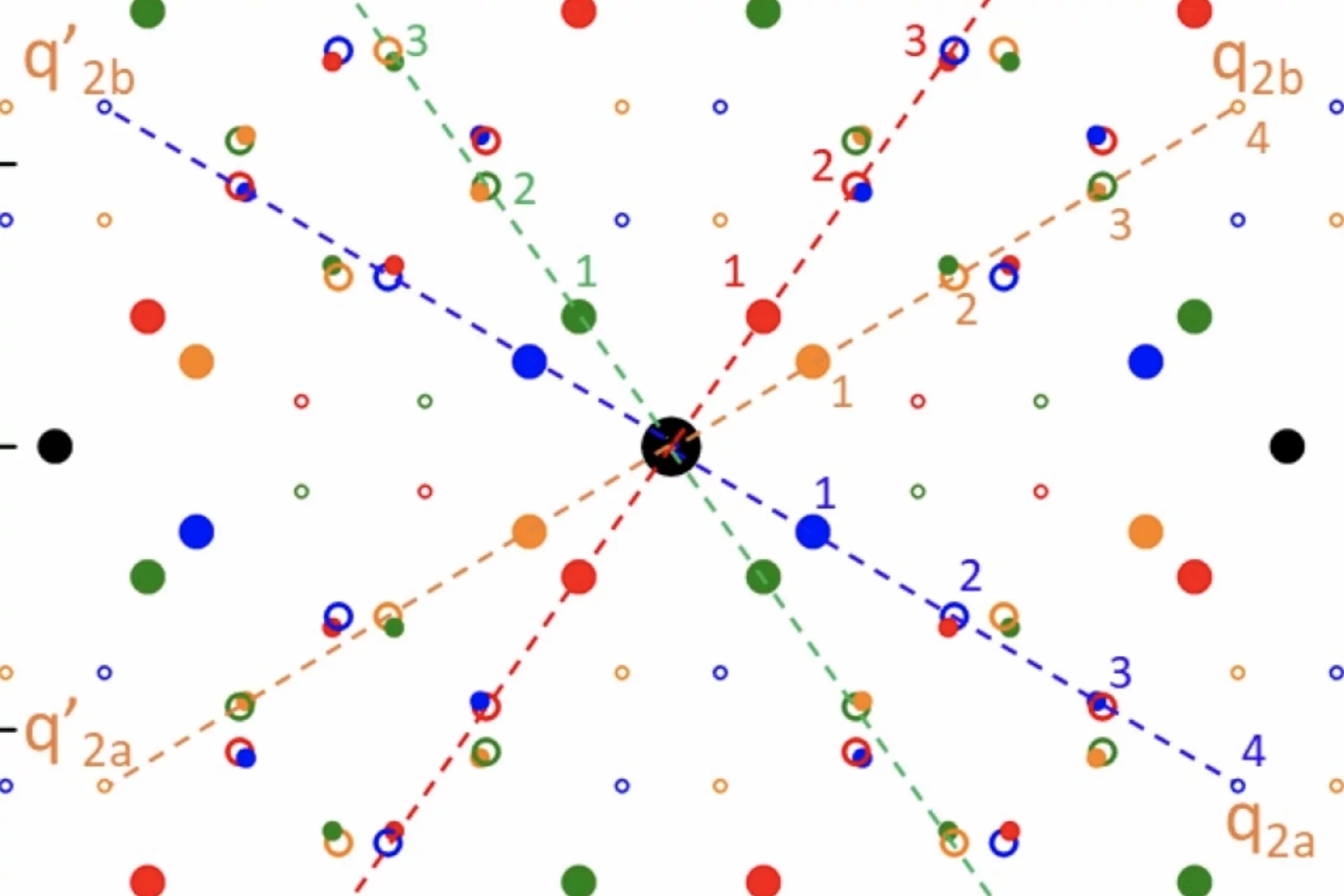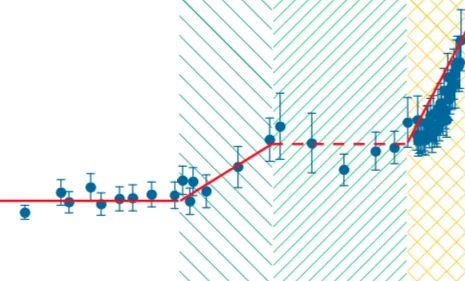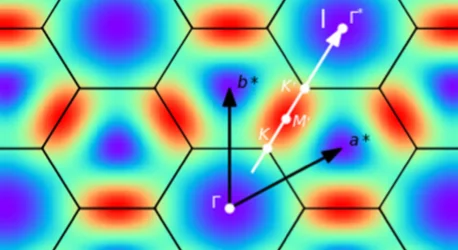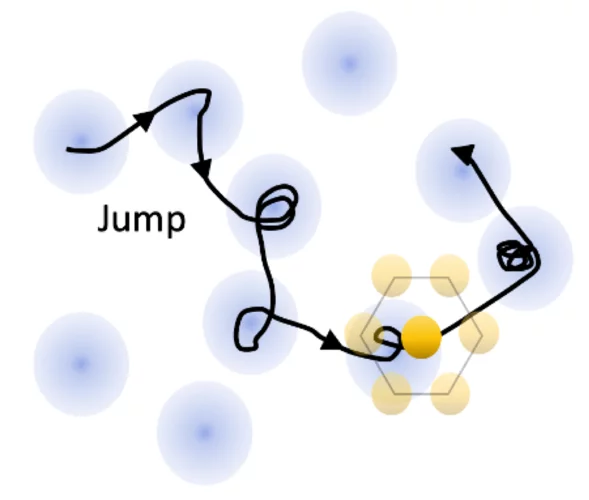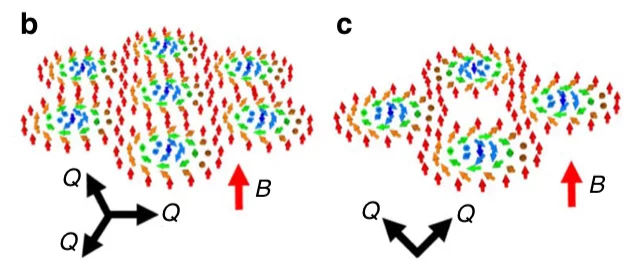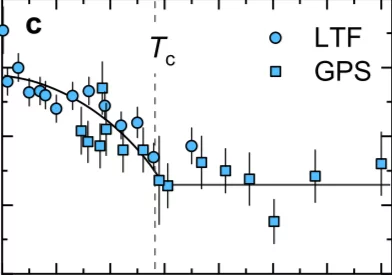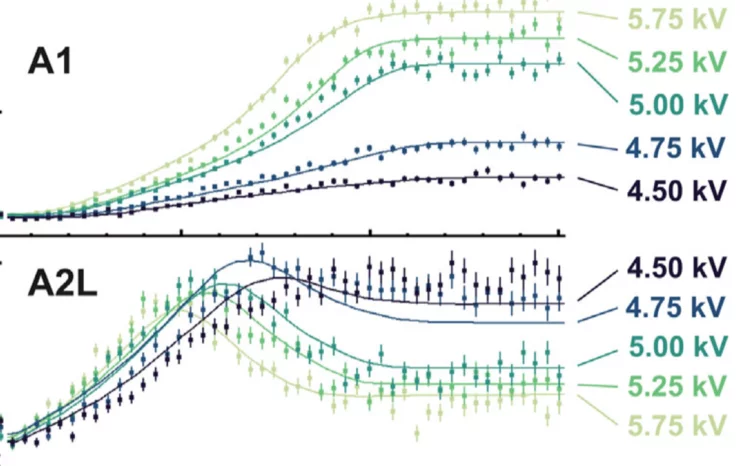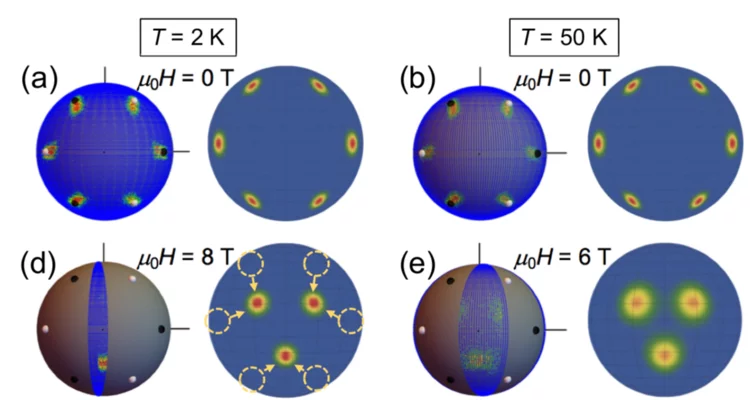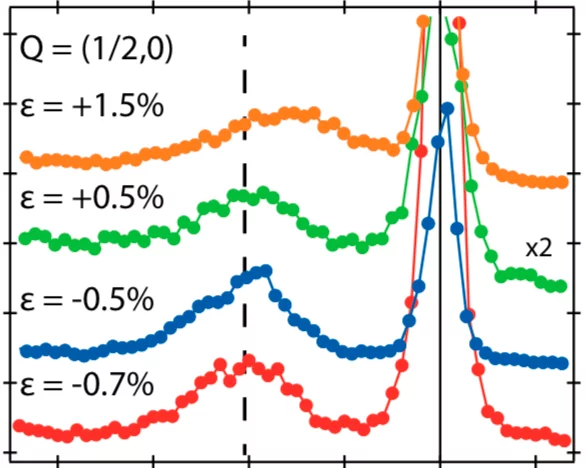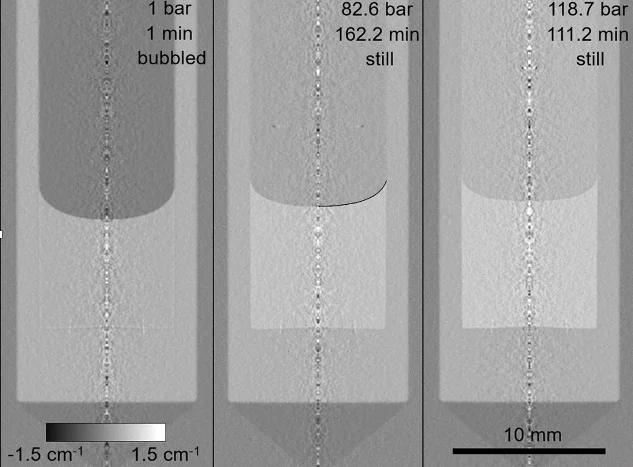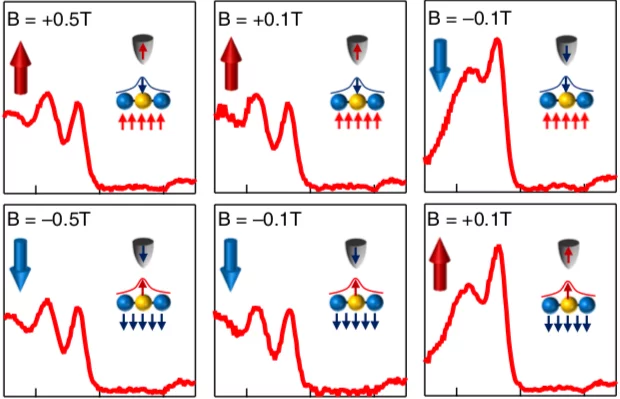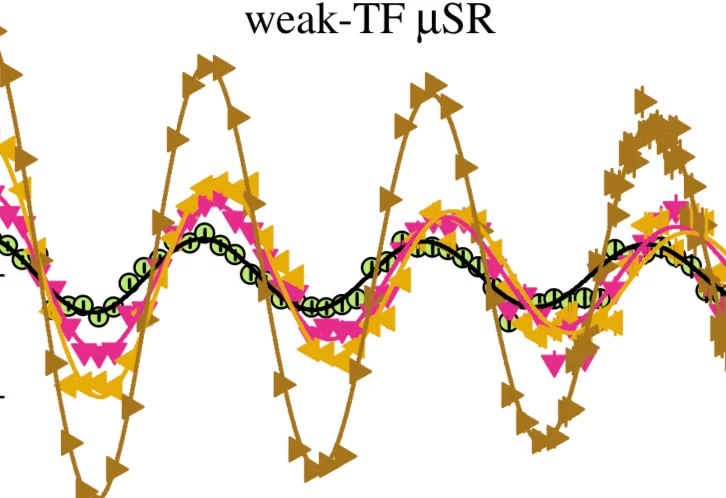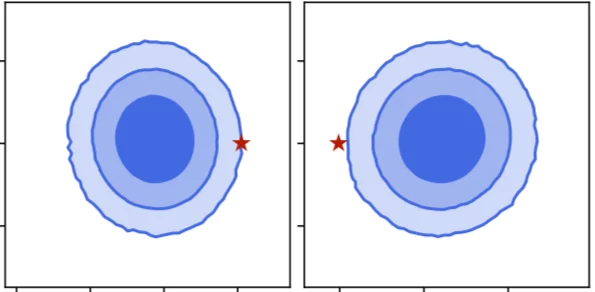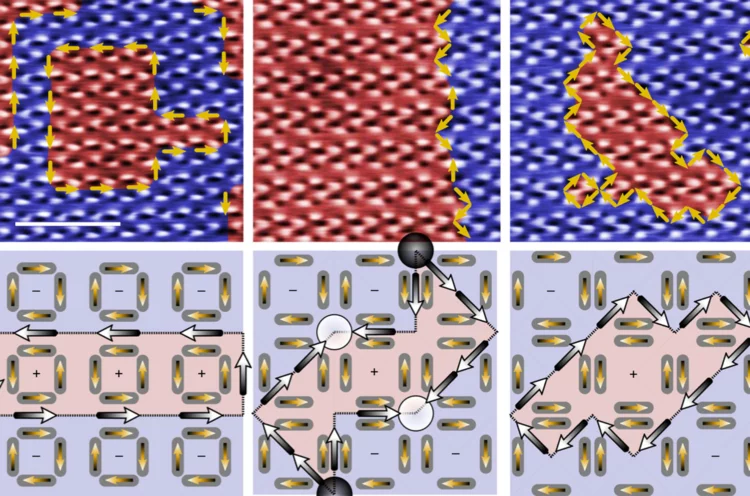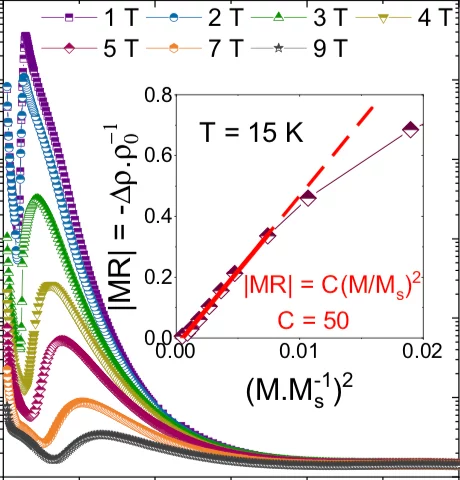Split superconducting and time-reversal symmetry-breaking transitions in Sr2RuO4 under stress
Strontium ruthenate (Sr2RuO4) continues to present an important test of our understanding of unconventional superconductivity, because while its normal-state electronic structure is known with precision, its superconductivity remains unexplained. There is evidence that its order parameter is chiral, but reconciling this with recent observations of the spin part of the pairing requires an order parameter that is either finely tuned or implies a new form of pairing. Therefore, a definitive resolution of whether the superconductivity of Sr2RuO4 is chiral is important for the study of superconductivity.
Strong Superexchange in a d^(9−δ) Nickelate Revealed by Resonant Inelastic X-Ray Scattering
The discovery of superconductivity in a d9−δ nickelate has inspired disparate theoretical perspectives regarding the essential physics of this class of materials. A key issue is the magnitude of the magnetic superexchange, which relates to whether cuprate-like high-temperature nickelate superconductivity could be realized. We address this question using Ni L-edge and O K-edge spectroscopy of the reduced d9−1/3 trilayer nickelates R4Ni3O8 (where R = La, Pr) and associated theoretical modeling.
Decomposing Magnetic Dark-Field Contrast in Spin Analyzed Talbot-Lau Interferometry: A Stern-Gerlach Experiment without Spatial Beam Splitting
We have recently shown how a polarized beam in Talbot-Lau interferometric imaging can be used to analyze strong magnetic fields through the spin dependent differential phase effect at field gradients. While in that case an adiabatic spin coupling with the sample field is required, here we investigate a nonadiabatic coupling causing a spatial splitting of the neutron spin states with respect to the external magnetic field. This subsequently leads to no phase contrast signal but a loss of interferometer visibility referred to as dark-field contrast.
Unconventional Transverse Transport above and below the Magnetic Transition Temperature in Weyl Semimetal EuCd2As2
As exemplified by the growing interest in the quantum anomalous Hall effect, the research on topology as an organizing principle of quantum matter is greatly enriched from the interplay with magnetism. In this vein, we present a combined electrical and thermoelectrical transport study on the magnetic Weyl semimetal EuCd2As2. Unconventional contribution to the anomalous Hall and anomalous Nernst effects were observed both above and below the magnetic transition temperature of EuCd2As2, indicating the existence of significant Berry curvature.
Size of helium nucleus measured more precisely than ever before
In experiments at the Paul Scherrer Institute PSI, an international research collaboration has measured the radius of the atomic nucleus of helium five times more precisely than ever before. The researchers are publishing their results today in the journal Nature.
Interdependent scaling of long-range oxygen and magnetic ordering in nonstoichiometric Nd2NiO4.10
The interplay between oxygen and spin ordering for the low oxygen doped Nd2NiO4.10 has been investigated by single-crystal neutron diffraction. We find a coexistence of the magnetic order below TN with the 3D ordering of excess oxygen atoms, which has not been previously observed for the homologous nickelates. Moreover, the magnetic ordering modulation vectors are no longer independent and exactly follow the modulation vectors of the oxygen ordering.
Quantum spin-liquid states in an organic magnetic layer and molecular rotor hybrid
A better understanding of quantum spin liquids (QSLs), where spin dimer configurations are fluctuating even at the low- est temperatures, could be of use in quantum information, in superconducting or other technologies. This macroscopic collective state typically arises from geometrical frustration or low dimensionality. In the layered EDT-BCO, we report a QSL state, which is generated, on different bases, with the intrinsic disorder.
Observation of plaquette fluctuations in the spin-1/2 honeycomb lattice
Quantum spin liquids are materials that feature quantum entangled spin correlations and avoid magnetic long-range order at T =0 K. Particularly interesting are two-dimensional honeycomb spin lattices where a plethora of exotic quantum spin liquids have been predicted. Here, we experimentally study an effective S = 1/2 Heisenberg honeycomb lattice with competing nearest and next-nearest-neighbour interactions.
Revealing Creep Motion of a Skyrmion Lattice at Ultra-Low Current Densities
Magnetic skyrmions are well-suited for encoding information because they are nano-sized, topologically stable, and only require ultra-low critical current densities jc to depin from the underlying atomic lattice. Above jc, skyrmions exhibit well-controlled motion, making them prime candidates for race-track memories. In thin films thermally-activated creep motion of isolated skyrmions was observed below jc as predicted by theory.
Particle-size dependent structural transformation of skyrmion lattice
Magnetic skyrmion is a topologically protected particle-like object in magnetic materials, appearing as a nanometric swirling spin texture. The size and shape of skyrmion particles can be flexibly controlled by external stimuli, which suggests unique features of their crystallization and lattice transformation process. Here, we investigated the detailed mechanism of structural transition of skyrmion lattice (SkL) in a prototype chiral cubic magnet Cu2OSeO3, by combining resonant soft X-ray scattering (RSXS) experiment and micromagnetic simulation...
Multiphase magnetism in Yb2Ti2O7
Quantum materials have properties that defy conventional theories of solids. Explaining these unusual properties is a frontier in physics, which promises both technological applications and fundamentally new states of matter. Yb2Ti2O7 is a center of attention in this work. While it becomes ferromagnetic at very low temperature, its excitation spectrum resembles that of a quantum spin liquid. We show using neutron scattering ...
Re(1−x)Mox as an ideal test case of time-reversal symmetry breaking in unconventional superconductors
Non-centrosymmetric superconductors (NCSCs) are promising candidates in the search for unconventional and topological superconductivity. The α-Mn-type rhenium-based alloys represent excellent examples of NCSCs, where spontaneous magneticfields, peculiar to time-reversal symmetry (TRS) breaking, have been shown to develop in the superconducting phase. By converse, TRS is preserved in many other isostructural NCSCs, thus leaving the key question about its origin fully open. Here, we consider ...
From magnetic order to quantum disorder in the Zn-barlowite series of S = 1/2 kagomé antiferromagnets
We report a comprehensive muon spectroscopy study of the Zn-barlowite series of S=1/2 kagomé antiferromagnets, ZnxCu4−x(OH)6FBr, for x = 0.00 to 0.99(1). By combining muon spin relaxation and rotation measurements with state-of-the-art density-functional theory muon-site calculations, we observe the formation of both μ–F and μ–OH complexes in Zn-barlowite. From these stopping sites, implanted muon spins reveal the suppression of long-range magnetic order into a possible quantum spin liquid state upon the increasing concentration of Zn-substitution.
Front passivation of Cu(In,Ga)Se2 solar cells using Al2O3: Culprits and benefits
In the past years, the strategies used to break the Cu(In,Ga)Se2 (CIGS) light to power conversion effi- ciency world record value were based on improvements of the absorber optoelectronic and crystalline properties, mainly using complex post-deposition treatments. To reach even higher efficiency values, fur- ther advances in the solar cell architecture are needed, in particular, with respect to the CIGS interfaces. In this study, we evaluate the structural, morphological and optoelectronic impact of an Al2O3 layer as a potential front passivation layer on the CIGS properties, as well as an Al2O3 tunneling layer between CIGS and CdS.
Demonstration of Muon-Beam Transverse Phase-Space Compression
We demonstrate efficient transverse compression of a 12.5 MeV=c muon beam stopped in a helium gas target featuring a vertical density gradient and crossed electric and magnetic fields. The muon stop distribution extending vertically over 14 mm was reduced to a 0.25 mm size (rms) within 3.5 μs. The simulation including cross sections ...
Electroless Deposition of Ni–Fe Alloys on Scaffolds for 3D Nanomagnetism
3D magnetic nanostructures are of great interest due to the possibility to design novel properties and the benefits for both technological applications such as high-density data storage, as well as more fundamental studies.
One of the main challenges facing the realization of these three-dimensional systems is their fabrication, which includes the deposition of magnetic materials on 3D surfaces. In this work, the electroless deposition of Ni–Fe
on a 3D-printed, non-conductive microstructure is presented.
Direct Observation of the Statics and Dynamics of Emergent Magnetic Monopoles in a Chiral Magnet
In the three-dimensional (3D) Heisenberg model, topological point defects known as spin hedgehogs behave as emergent magnetic monopoles, i.e., quantized sources and sinks of gauge fields that couple strongly to conduction electrons, and cause unconventional transport responses such as the gigantic Hall effect. We observe a dramatic change in the Hall effect upon the transformation of a spin hedgehog crystal in a chiral magnet MnGe through combined measurements of magnetotransport and small-angle neutron scattering (SANS).
Fractional antiferromagnetic skyrmion lattice induced by anisotropic couplings
Magnetic skyrmions are topological solitons with a nanoscale winding spin texture that hold promise for spintronics applications. Skyrmions have so far been observed in a variety of magnets that exhibit nearly parallel alignment for neighbouring spins, but theoretically skyrmions with anti-parallel neighbouring spins are also possible. Such antiferromagnetic skyrmions may allow more flexible control than conventional ferromagnetic skyrmions. Here, by combining neutron scattering measurements and Monte Carlo simulations, we show that a fractional antiferromagnetic skyrmion lattice is stabilized in MnSc2S4 through anisotropic couplings.
Strain engineering of the charge and spin-orbital interactions in Sr2IrO4
Understanding the relationship between entangled degrees of freedom (DOF) is a central problem in correlated materials and the possibility to influence their balance is promising toward realizing novel functionalities. In Sr2IrO4, the interaction between spin–orbit coupling and electron correlations induces an exotic ground state with magnetotransport properties promising for antiferromagnetic spintronics applications.
One-pot neutron imaging of surface phenomena, swelling and diffusion during methane absorption in ethanol and n-decane under high pressure
We study the gas diffusion in still liquids under gas high pressures. We demonstrate that the pressure-induced gas diffusion, liquid swelling and the liquid surface tension can be measured simultaneously in a one-pot experiment. The measurements are performed using the high-resolution neutron imaging in a non-tactile way. A major advantage of this new method is that the determination of surface tension necessitate no assumptions imposed on the properties of the liquid.
Signatures of a Spin-1/2 Cooperative Paramagnet in the Diluted Triangular Lattice of Y2CuTiO6
We present a combination of thermodynamic and dynamic experimental signatures of a disorder driven dynamic cooperative paramagnet in a 50% site diluted triangular lattice spin-1/2 system: Y2CuTiO6. Magnetic ordering and spin freezing are absent down to 50 mK, far below the Curie-Weiss scale (-θCW) of ∼134 K.
Spin-orbit quantum impurity in a topological magnet
Quantum states induced by single-atomic impurities are at the frontier of physics and material science. While such states have been reported in high-temperature superconductors and dilute magnetic semiconductors, they are unexplored in topological magnets which can feature spin-orbit tunability. Here we use spin-polarized scanning tunneling microscopy/ spectroscopy (STM/S) to study the engineered quantum impurity in a topological magnet Co3Sn2S2. We find that each substituted In impurity introduces a striking localized bound state.
Using Uniaxial Stress to Probe the Relationship between Competing Superconducting States in a Cuprate with Spin-stripe Order
We report muon spin rotation and magnetic susceptibility experiments on in-plane stress effects on the static spin-stripe order and superconductivity in the cuprate system La2−xBaxCuO4 with x = 0.115. An extremely low uniaxial stress of ∼0.1 GPa induces a substantial decrease in the magnetic volume fraction and a dramatic rise in the onset of 3D superconductivity, from ∼10 to 32 K.
Global Fit to Modified Neutrino Couplings and the Cabibbo-Angle Anomaly
Recently, discrepancies of up to 4σ between the different determinations of the Cabibbo angle were observed. In this context, we point out that this “Cabibbo-angle anomaly” can be explained by lepton flavor universality violating new physics in the neutrino sector. However, modified neutrino couplings to standard model gauge bosons also affect many other observables sensitive to lepton flavor universality violation, which have to be taken into account in order to assess the viability of this explanation.
Relation between microscopic interactions and macroscopic properties in ferroics
The driving force in materials to spontaneously form states with magnetic or electric order is of fundamental importance for basic research and device technology. The macroscopic properties and functionalities of these ferroics depend on the size, distribution and morphology of domains; that is, of regions across which such uniform order is maintained. Typically, extrinsic factors such as strain profiles, grain size or annealing procedures control the size and shape of the domains, whereas intrinsic parameters are often difficult to extract due to the complexity of a processed material. Here, we achieve this separation ...
Colossal magnetoresistance in a nonsymmorphic antiferromagnetic insulator
Here we investigate antiferromagnetic Eu5In2Sb6, a nonsymmorphic Zintl phase. Our electrical transport data show that Eu5In2Sb6 is remarkably insulating and exhibits an exceptionally large negative magnetoresistance, which is consistent with the presence of magnetic polarons. From ab initio calculations, the paramagnetic state of Eu5In2Sb6 is a topologically nontrivial semimetal within the generalized gradient approximation (GGA), whereas an insulating state with trivial topological indices is obtained using a modified Becke−Johnson potential.
Many-Body Resonance in a Correlated Topological Kagome Antiferromagnet
We use scanning tunneling microscopy to elucidate the atomically resolved electronic structure in the strongly correlated kagome Weyl antiferromagnet Mn3Sn. In stark contrast to its broad single-particle electronic structure, we observe a pronounced resonance with a Fano line shape at the Fermi level resembling the many-body Kondo resonance. We find that this resonance does not arise from the step edges or atomic impurities but the intrinsic kagome lattice.
Handedness-dependent quasiparticle interference in the two enantiomers of the topological chiral semimetal PdGa
It has recently been proposed that combining chirality with topological band theory results in a totally new class of fermions. Understanding how these unconventional quasiparticles propagate and interact remains largely unexplored so far. Here, we use scanning tunneling microscopy to visualize the electronic properties of the prototypical chiral topological semimetal PdGa.
Proximity-Induced Odd-Frequency Superconductivity in a Topological Insulator
At an interface between a topological insulator (TI) and a conventional superconductor (SC), superconductivity has been predicted to change dramatically and exhibit novel correlations. In particular, the induced superconductivity by an s-wave SC in a TI can develop an order parameter with a p-wave component. Here we present experimental evidence for an unexpected proximity-induced novel super- conducting state in a thin layer of the prototypical TI, Bi2Se3 proximity coupled to Nb.
Momentum-Dependent Magnon Lifetime in the Metallic Noncollinear Triangular Antiferromagnet CrB2
Noncollinear magnetic order arises for various reasons in several magnetic systems and exhibits interesting spin dynamics. Despite its ubiquitous presence, little is known of how magnons, otherwise stable quasiparticles, decay in these systems, particularly in metallic magnets. Using inelastic neutron scattering, we examine the magnetic excitation spectra in a metallic noncollinear antiferromagnet CrB2, in which Cr atoms form a triangular lattice and display incommensurate magnetic order. Our data show intrinsic magnon damping ...


